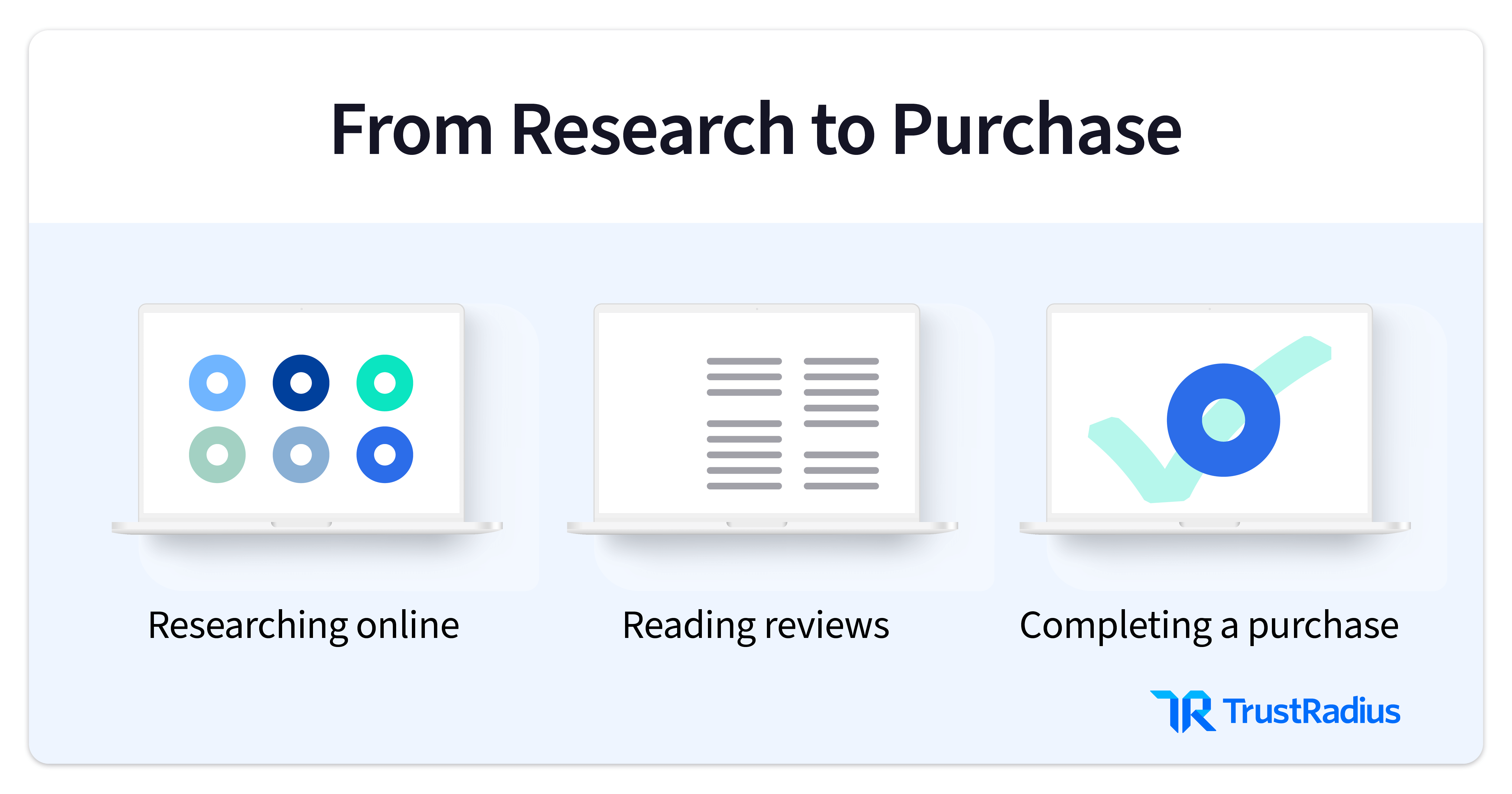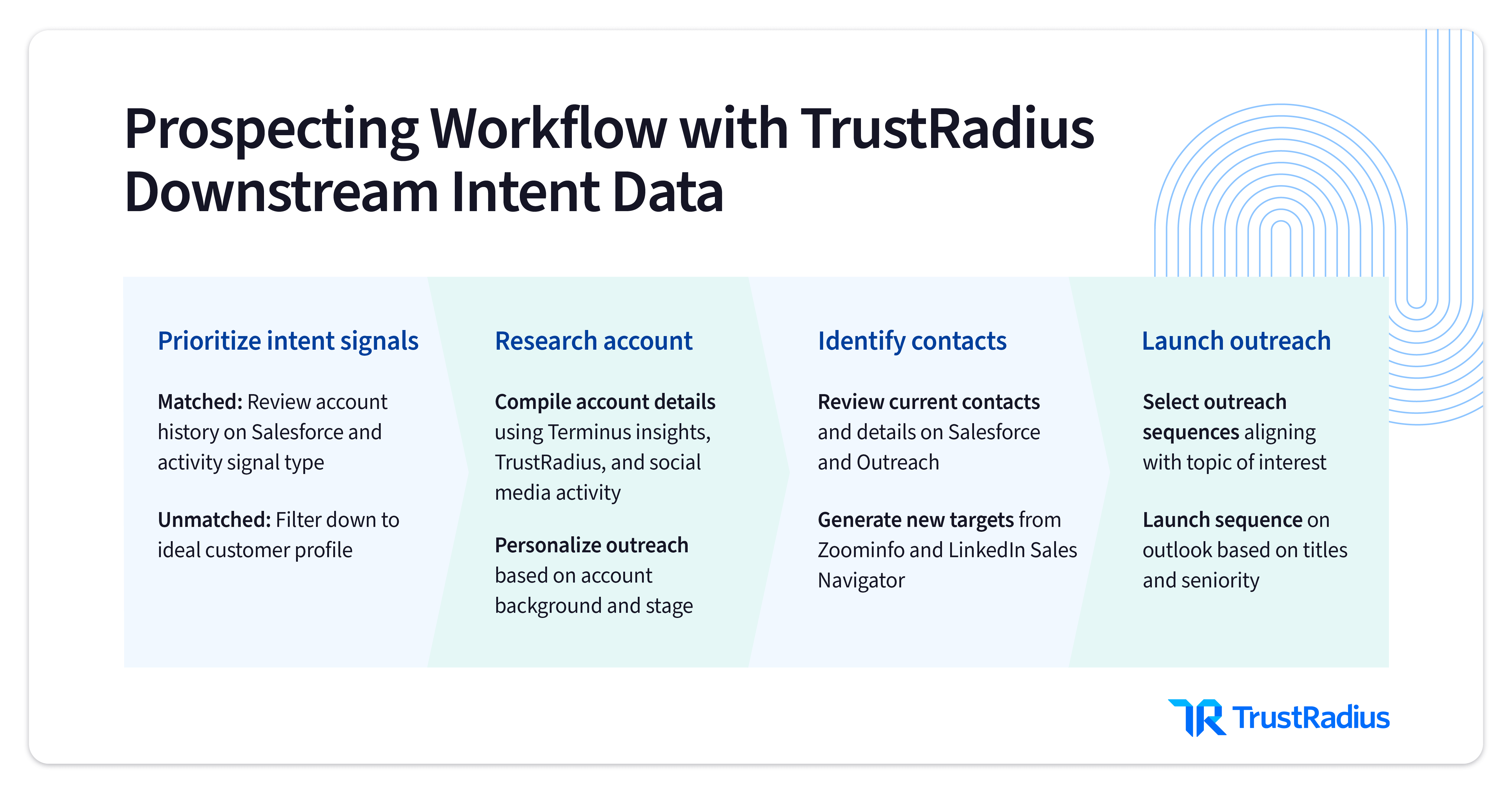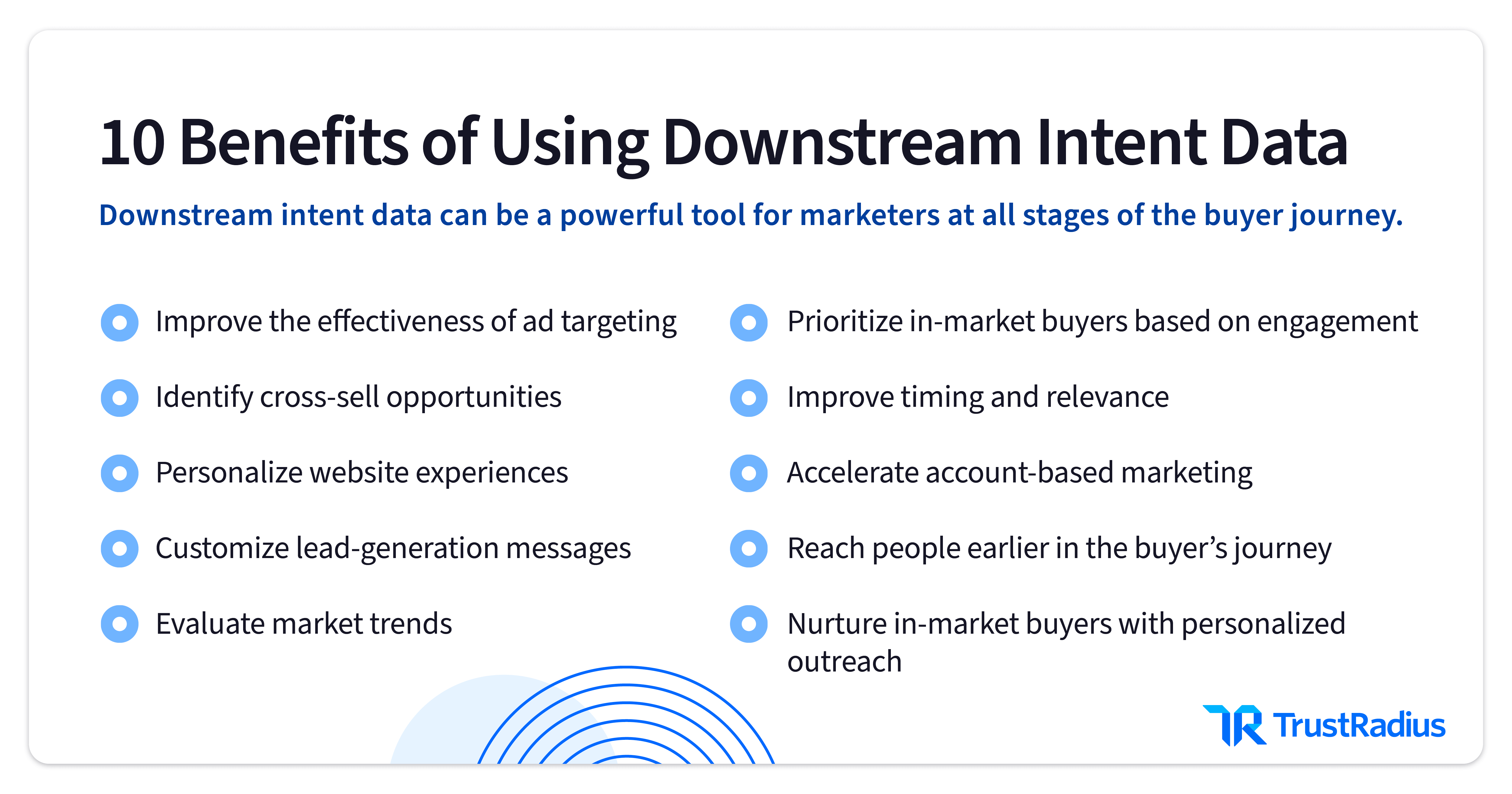How to Leverage Intent Data: 10 Tips That Drive Revenue
Knowing how to leverage intent data is a critical skill for B2B marketers today. Top brands are already using intent data to identify and target prospective buyers more quickly and effectively. To keep up, marketers must understand what intent data is and how it can accelerate all stages of the buyer journey and drive revenue more efficiently.
Research suggests that over 70% of B2B marketers are using or plan to use intent data for prospecting, account-based marketing, email marketing, and more. Moreover, nearly 70% of best-in-class marketers say they’re already “very successful” with intent data.
But if you’re behind the curve, it’s not too late to catch up. Learn more about the benefits of intent data, and 10 ways to use intent data to strengthen pipeline generation and increase revenue.
What does intent data do?
B2B buyer intent data is a set of behavioral data points that indicate someone may be interested in buying your product. Websites collect intent signals from users—including the pages they visit, the links they click, and the resources they download—then gather and analyze that data to build a profile of those users.
In essence, intent data allows brands to identify people who are most likely to buy their product, in other words, in-market—instead of relying on board marketing campaigns and cold outreach.
First-party vs. second-party vs. third-party data
Intent data can come from multiple sources, including a publisher’s website, third-party purchases, or another organization’s shared first-party data.
First-party intent data can be a combination of data collected directly from users, such as behavior and interest data. It can also come from a customer relationship management (CRM) system or be collected from other avenues such as forms, questionnaires, subscriptions, or social media.
Second-party intent data is essentially first-party intent data sold by another company. While it’s not used as frequently as first- or third-party intent data, it can be incredibly valuable for brands as an extension of existing data. It is representative of first-party actions usually taken on a publisher’s site.
Third-party intent data is collected from outside sources and represents topical searches and the content consumption of a potential buyer. This data can be obtained through a number of methods, so it’s important to find a reputable provider that is trustworthy and transparent.
Intent data in action
A user visits a website selling payroll software. This action alone doesn’t necessarily indicate that the user is urgently shopping for the software. Still, as the user continues through the site, they may initiate more research—looking for and comparing user reviews or pricing, which can then be compiled to form assumptions about the user’s intent.

What are the benefits of intent data?
Incorporating intent data into your marketing campaigns and sales outreach leads to three primary benefits.
Understanding what your prospects and customers need most
Intent data can give brands a better understanding of their prospects’ and customers’ needs. When brands recognize behavioral patterns indicating a specific problem that needs a solution, they can meet prospects where they are in the buying journey. This level of detail can help craft the right messaging at the right time for in-market buyers.
Intent data can also allow brands to learn more about their customers and apply those insights to retention and expansion efforts based on fresh, high-quality data.
In other words, strike while the iron is hot.
Expediting the sales process
Not only can intent data help with personalized messaging and better timing, it can also help expedite the sales process in general. Sales and marketing teams can identify and proactively engage with in-market buyers earlier in the buying process by using intent data to help qualify them more accurately.
Reducing wasted time and resources
Marketing and sales teams can benefit from reduced waste by incorporating intent data into their efforts. While reaching prospects at all stages of the buying funnel is important, brands benefit from leaner, more effective marketing and advertising campaigns that focus directly on in-market buyers who are closer to making a purchase decision. Marketers can generate more qualified pipeline faster, and sales teams can comfortably approach good-fit prospects and be armed with better knowledge of their needs and intentions, all to accelerate the sales cycle and increase win rates.
How to leverage intent data
Intent data can be useful at all stages of the buyer journey, and by incorporating insights from different types of intent data, brands can drive revenue while taking a more targeted and stage-appropriate approach to in-market buyers. Read on for 10 ways to use intent data to drive revenue.
1. Improve the effectiveness of advertising targeting
Intent data can be one of the strongest signals that a prospect is considering a brand (or a competitor). Build audiences using intent data then target them with advertising campaigns to more accurately message and reach people who already show interest in your product or service.
Broad, top-of-funnel awareness campaigns are still important for introducing audiences to your brand, but directing more attention to people already indicating they’re a good fit can yield better results for marketing and sales teams alike.
2. Identify cross-sell opportunities
Beyond new customers, intent data can also help shine a light on the experiences of existing customers. As brands build trust with customers, there is an increasing opportunity to become a customer resource that serves additional needs.
Pair intent data with existing customer data to proactively identify cross-sell and upsell opportunities. This combination of data better aligns marketing and sales teams with customers’ needs and the available products or services that have not been purchased. Search for trends from existing customers to identify patterns of behavior that future customers will likely follow. Build campaigns based on that journey and offer products or services that proactively solve future needs.
3. Personalize website experiences
Knowing more about a prospective customer enables your brand to create a more personalized website experience. Use insights such as the type of content consumed and the frequency of site visits to help draw conclusions about the level of consideration users are giving your brand. Tailor an experience based on those conclusions to target higher quality leads and increase ROI.
Competitive take-out messaging is a great example of using intent data to create a personalized experience that’s relevant to users. Totango used downstream intent data from TrustRadius to identify in-market customers that were using or considering a competitor for their customer success platform. By identifying prospects most likely to close with their competitor, Totango was able to highlight key differentiators for its product.
Totango incorporated the customer quotes from their reviews on TrustRadius to supply social proof of what their customers had to say about their product, further driving home the benefits of their platform for consumers who were decision-ready.
4. Customize lead-generation messages
Just because multiple users show interest in a brand doesn’t mean they’re all on the same stage in their buying journey. Intent data helps inform brands about the topics users are researching, which allows for customized lead-generation messages that are well-suited to each buyer’s stage.
Third-party intent data typically results from prospects near the top of the buying funnel as they’re becoming more aware of their problem and the possible solutions. First- and second-party data can include in-market prospects much closer to the consideration and decision phases of their journey. First-party signals come from your owned properties, like your landing pages and websites. Second-party signals come directly from publishers, like review platforms. Prospective buyers on review sites like TrustRadius are conducting in-depth product research, including comparing pricing and user reviews.
Create timely messaging focused on the specific problems prospects are facing and offer a solution that aligns with their capabilities and needs. For example, third-party top-of-funnel messaging should introduce a problem and how to solve it to generate interest. As prospects move further down the funnel, first- and second-party intent data can highlight more specific needs that can be addressed with targeted advertising, account-based marketing (ABM) campaigns, and personalized sales outreach.
5. Evaluate market trends
Use intent data to evaluate market trends to further campaign optimization and update messaging, new content, and more. Markets and audiences are constantly evolving, and so should your approach.
For example, LinkedIn is the world’s largest professional network, with 810 million members in more than 200 countries and territories worldwide, and it provides a vast audience of professionals ready to convert.
You can use TrustRadius’ LinkedIn Matched Audiences integration to build dynamic segments of buyers actively researching your products and your competitors’ to target and convert. Boost your return on ad spend, increase conversion rates, and accelerate the sales cycle while improving your bottom line.
6. Prioritize in-market buyers based on engagement
Integrate downstream intent data (which is different than third-party intent data) into your activation platform to prioritize prospects closer to making a purchase. Sales and marketing teams can use intent data to analyze which prospects are the lowest-hanging fruit for prioritization based on downstream intent signals. Users who show more interest in a brand can be segmented for targeting across sales and marketing.
Likewise, users showing signs of purchasing from a competitor can also be prioritized for quick action. Whether your activation platform is a CRM, an ad platform, or an ABM platform, integrating TrustRadius downstream intent data can help prioritize in-market buyers. For example, TrustRadius has integrations into 6sense, Demandbase One, LinkedIn, and Salesforce.
7. Improve timing and relevance
As we know, intent data provides additional insight into where prospective clients are in their buying process. By analyzing this data, brands can follow up with relevant, timely messaging, such as a trial, demo, or other incentives. These offers are best used with downstream intent data because brands have actionable insight into what users are researching and where they are in the buying process.

8. Accelerate account-based marketing
To get started with ABM, the most difficult part is knowing which accounts to go after. Understanding more about accounts allows marketing and sales teams to adopt personalized ABM tactics to connect, inform, and convert those accounts more efficiently.
These case studies illustrate how organizations use TrustRadius downstream intent data to reach more of their intended audience and boost ABM account engagement and conversions, all to generate more qualified pipeline that closes faster.
Read how LogicMonitor boosted ABM account engagement by 81% with TrustRadius buyer intent data, and how Planful boosted reach and engagement by over 300% using downstream intent data.
9. Reach people earlier in the buying process
Use intent data to recognize potential buyers, help your brand connect and build preference early in the journey, and educate and encourage buyers to convert.
Third-party intent data sources are great for top-of-funnel insights. Though prospects may not be as likely to convert that early in the buying process, creating brand awareness and beginning to identify high-level prospects are essential actions in building a pipeline of prospective buyers.
10. Nurture in-market buyers with personalized outreach
Identify in-market buyers early in the buying process with intent data so sales teams can nurture them with personalized outreach when they are more open to education and consideration. This gives prospective buyers time to continue their research while keeping your brand top of mind.
Your business development representatives (BDRs) can build a cadence to nurture these leads based on various offers, such as reading a piece of content or joining a webinar or other event.
Evolve your approach to intent data
Intent data isn’t new, but the ways marketers are obtaining, analyzing, and using it have evolved rapidly. Recent changes related to data collection and targeting are shifting marketing strategies, making intent data more crucial for identifying in-market buyers early in the buying process and building relationships with them.
Leveraging the different types of intent data correctly, like downstream intent data from a quality source such as TrustRadius, can be a major driver of revenue for organizations. Learn more about B2B intent data, and contact us to learn more about our platform and how to activate downstream intent data.







